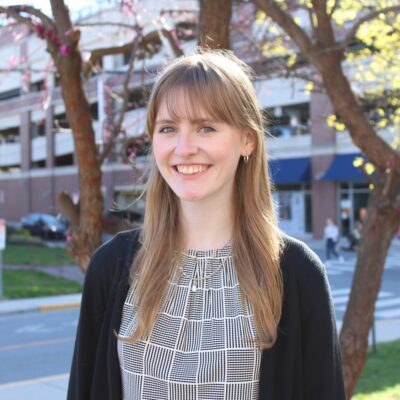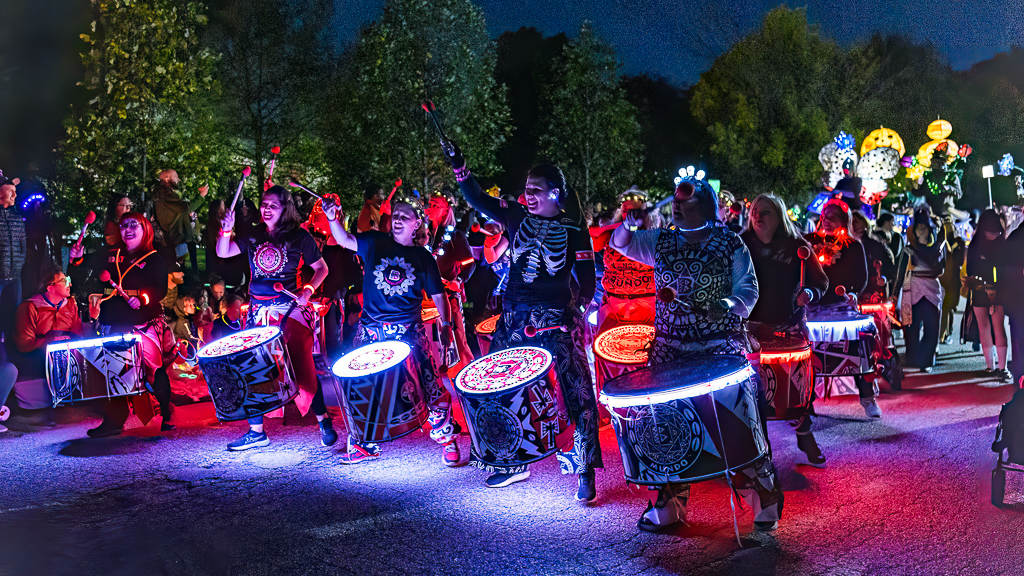
Each year at the end of October, dozens of lanterns bob up and down across Patterson Park, filling the dark sky with swirls of color.
A glowing bat, smiling jack-o-lanterns, and a long green dragon float above swaths of people. Stilt walkers dressed in glowing outfits walk along dancers and musicians. Children clutch homemade lanterns made from recycled plastic jugs and tissue paper. And witches, ghosts, and zombies vie for the top prize in a costume contest.
It’s all in celebration of the Creative Alliance’s Great Halloween Lantern Parade and Festival, a Baltimore staple incorporating multiple different community groups that is returning with a special 25th anniversary celebration on Saturday, October 26.
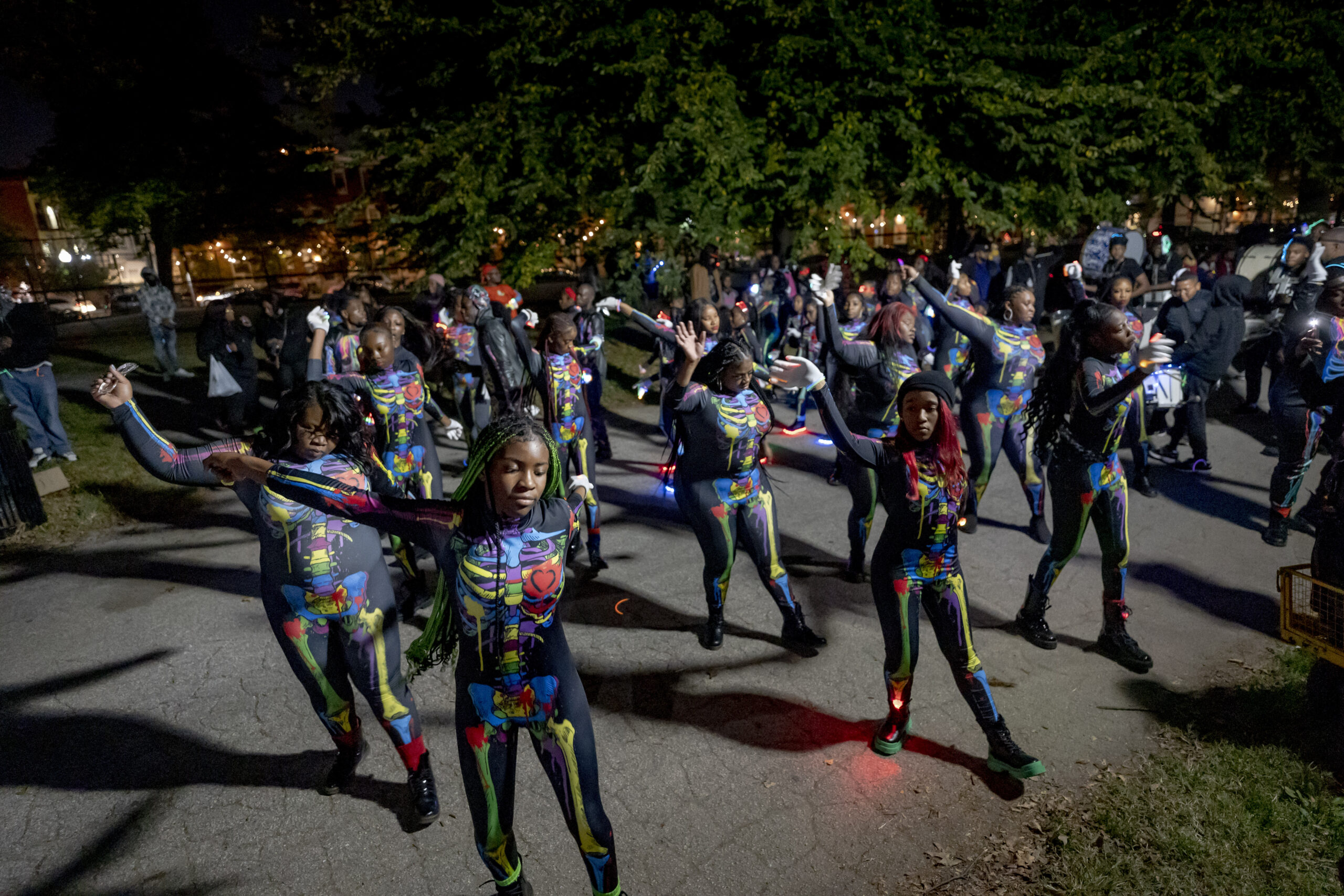
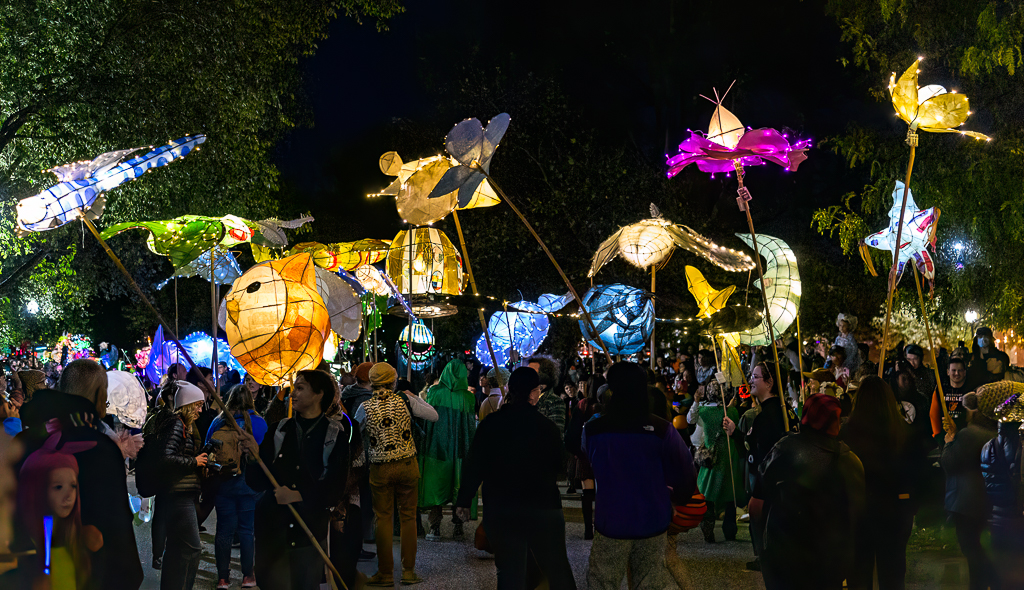
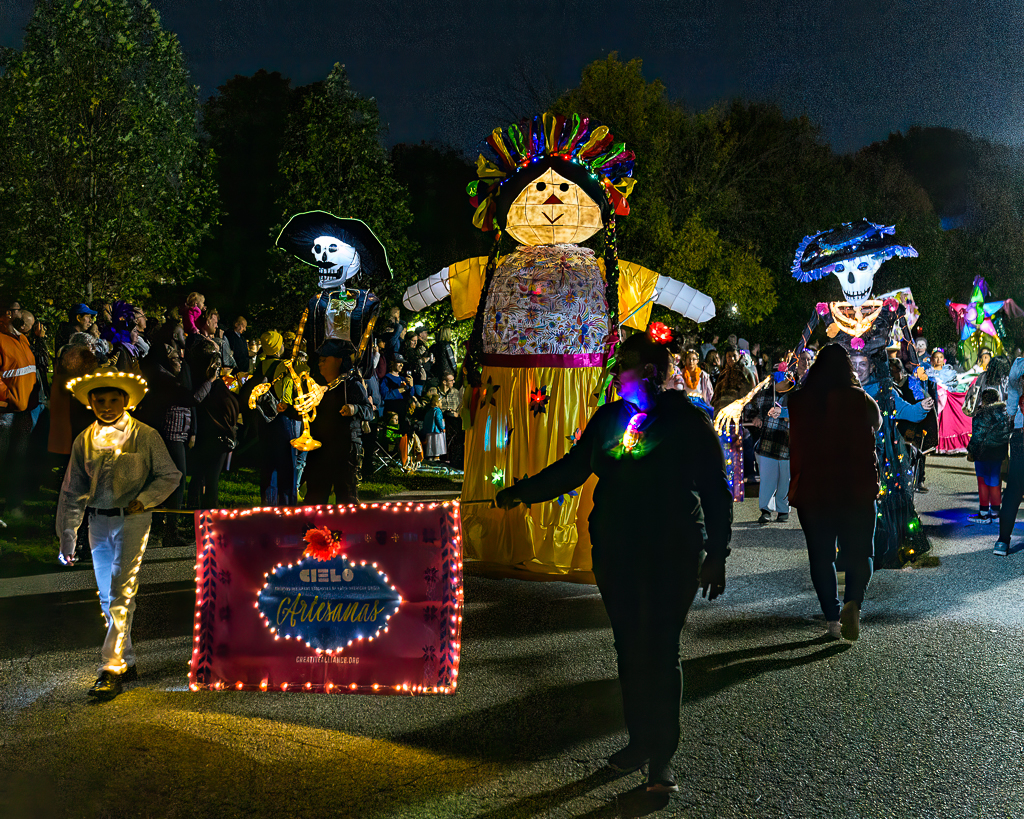
The first parade
Twenty-five years ago, a group of about 50—including organizers—traveled across the park, dotting the night with lanterns.
“Everyone who was there knew who was who,” remembers Kini Collins, who helped run the first parade with the Creative Alliance—the city’s pioneering arts and education organization which was then in its infancy, having formed only four years earlier in 1995.
The group moved from the Pulaski Monument to the Marble Fountain, which at the time hadn’t been functional in decades, and hung their lanterns on the wrought-iron fence surrounding it. The first event didn’t have long, theatrical floats or large-scale performances, but it had lanterns that glowed from real flames instead of fake candles. (Collins adds that it took several visits from fire marshals to convince them the event wouldn’t be a fire hazard.)
“A couple people got inside the fence and created these paper trees that we essentially just set on fire,” Collins says. “There was this big woosh, and all these lanterns were around it.”
Initially, the parade was created to strengthen the sense of community among Patterson Park residents and make them feel safer in the area at night, according to Tim Almaguer, who helped organize the first parade. It was also one of the early efforts to encourage the idea that preserving green space is just as important as maintaining streets and neighborhoods, he says.
“Parks and open spaces are defined by what happens in them,” says Almaguer, who currently works with Baltimore City Recreation and Parks. “To develop the community around the park, the park had to be good.”
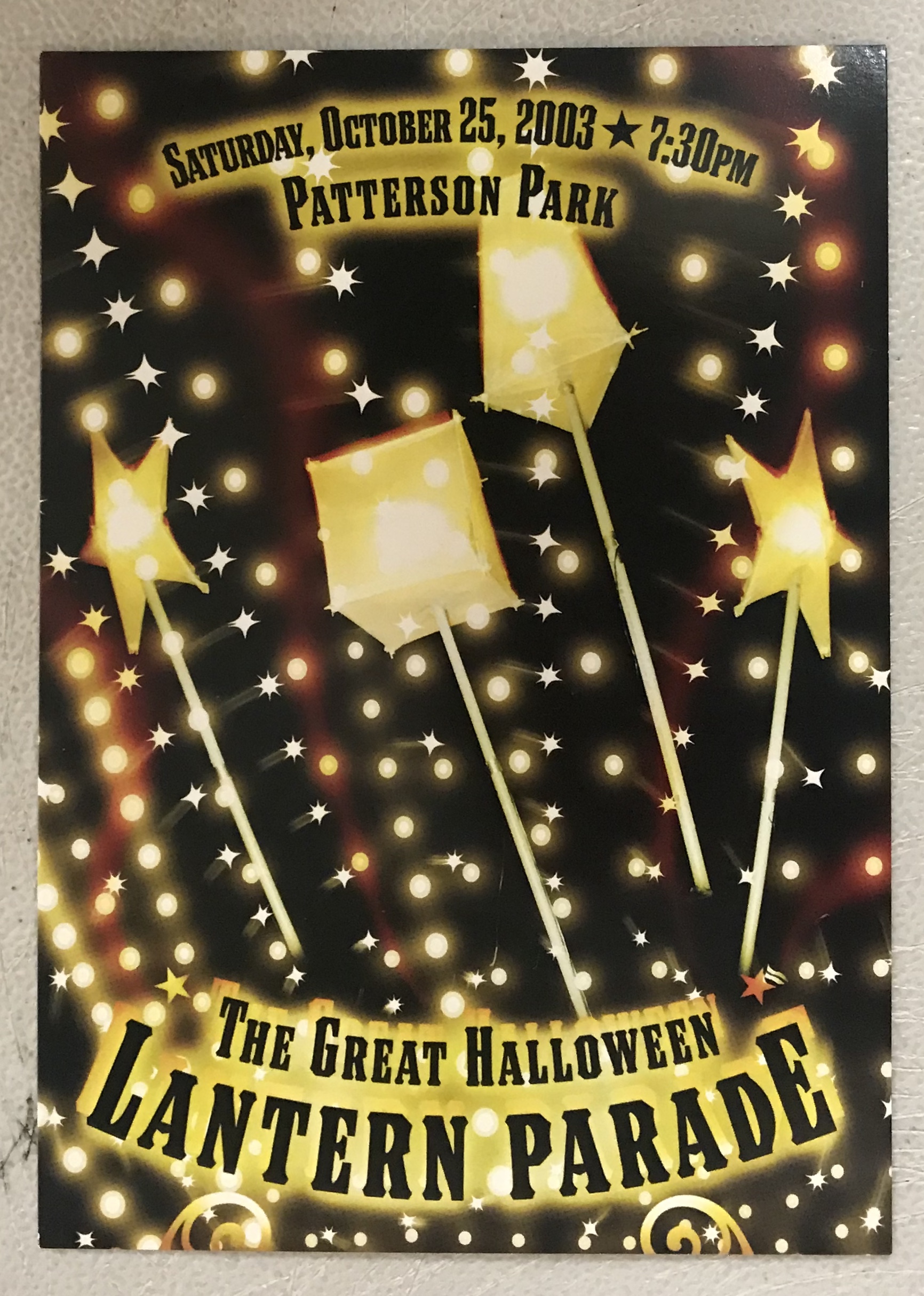
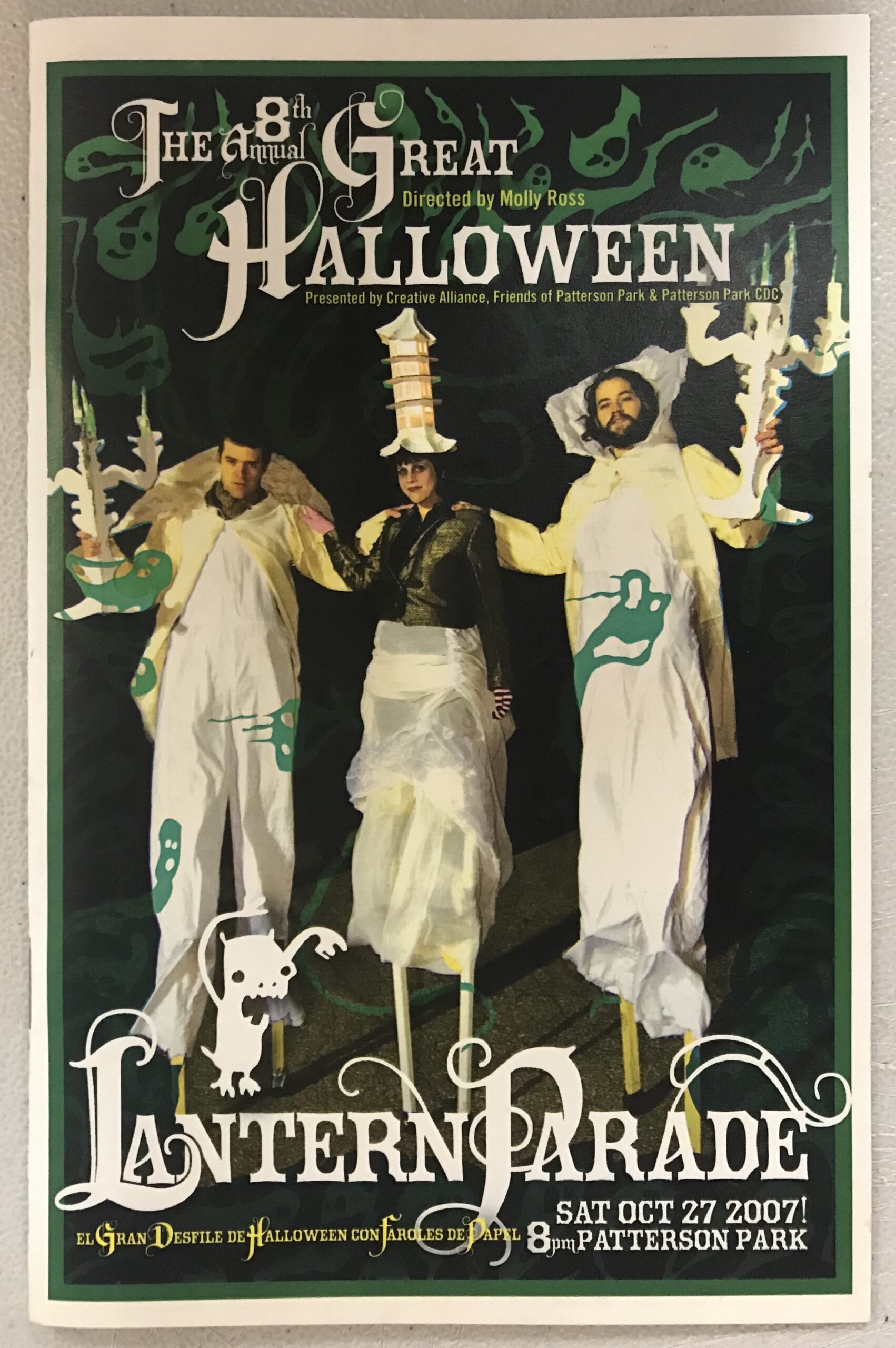
The parade started gaining traction at the same time as other local events that embraced creativity and imagination, including Fluid Movement’s production of Frankenstein on Wheels, which had its actors rollerblading to Michael Jackson’s “Thriller.” By the second parade in 2000, the number of attendees spiked to nearly 500.
In the early years, the procession ended with a shadow puppet show near the Observatory, where volunteers put up scaffolding with a big screen so attendees could see the performance.
“It was fantastic,” Almaguer says. “There’s a spirit and a joy in this culture, and in many ways, these kinds of events were to reclaim the park for the community.”
Cinder Hypki agrees. She is one of the founding board members of the nonprofit Friends of Patterson Park, which was established in 1998, in part, due to negative perceptions of the park. Hypki says that investing time and resources into the first parade required faith that it would pay off for the community.
“It seemed quite risky then,” she says. “Now it’s a Baltimore-wide community event—one that has transcended neighborhood borders and all the other boxes that can separate us.”
Highlighting the Baltimore community
Friends of Patterson Park’s executive director Jennifer Robinson says her most memorable Lantern Parade was when her daughter, who was in elementary school at the time, helped to create a 30-foot-long dragon with her Fells Point school. As a parent, it was special to see her daughter participating in the event she’d attended for decades—and helped to organize professionally.
“More schools have gotten involved and more types of groups have found it to be a catalyst to come together and create something fun,” Robinson says.
Since its founding, the festival has made it a priority to include multiple diverse community organizations to ensure it remains representative of the city’s makeup.
Almaguer, who is Latino, says one of his favorite years was the Día de Los Muertos (Day of the Dead)-themed procession in 2016 because of its visual luminance. Lanterns honored traditional elements of the Mexican celebration, incorporating candles, decorated skulls, and flowers.
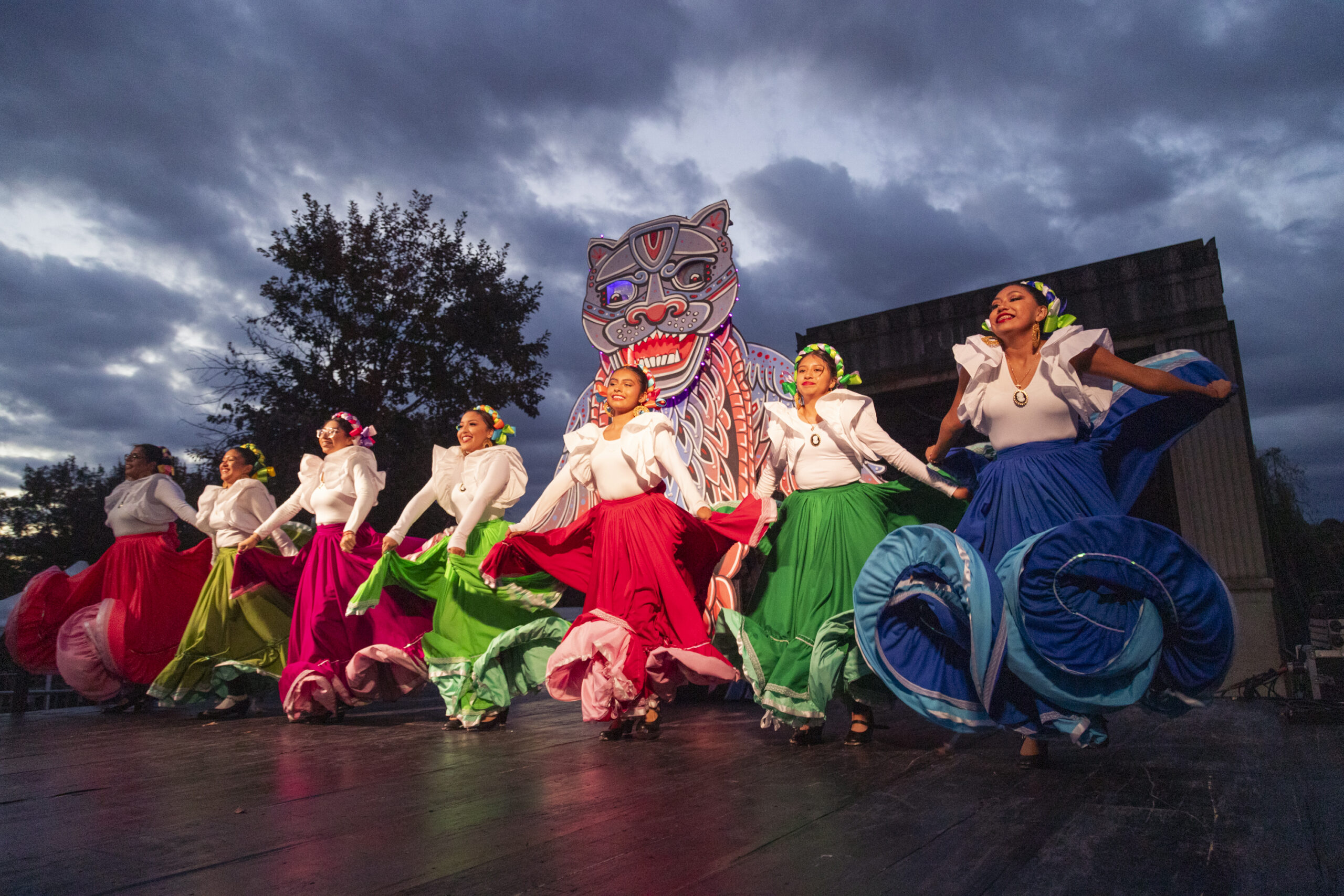
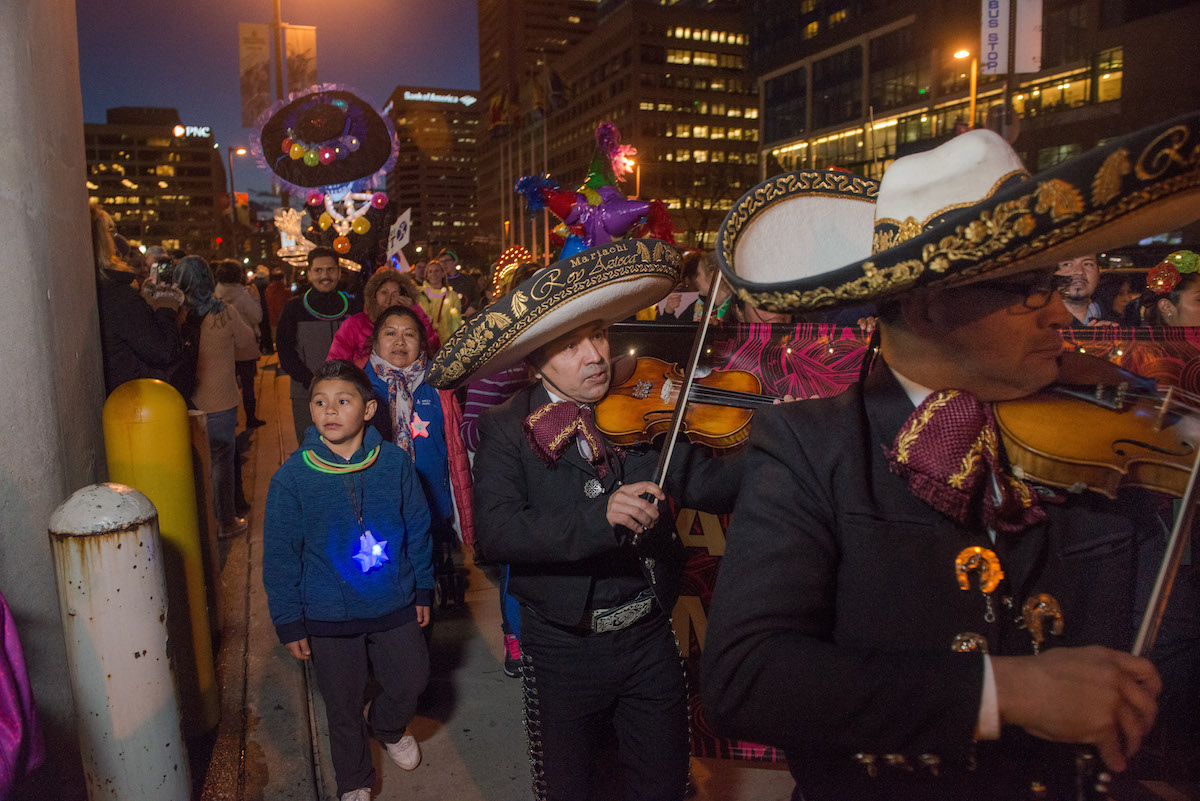
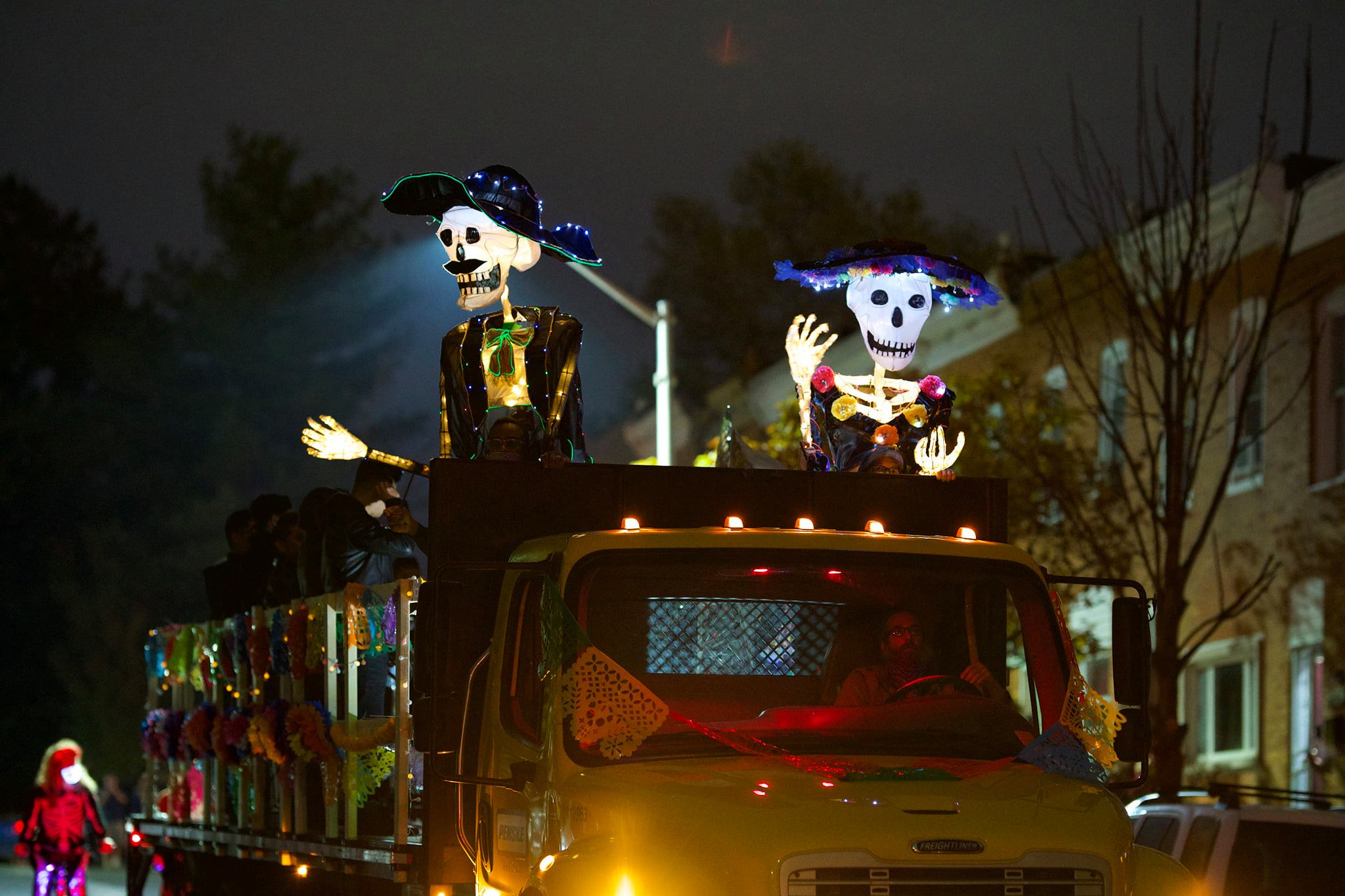
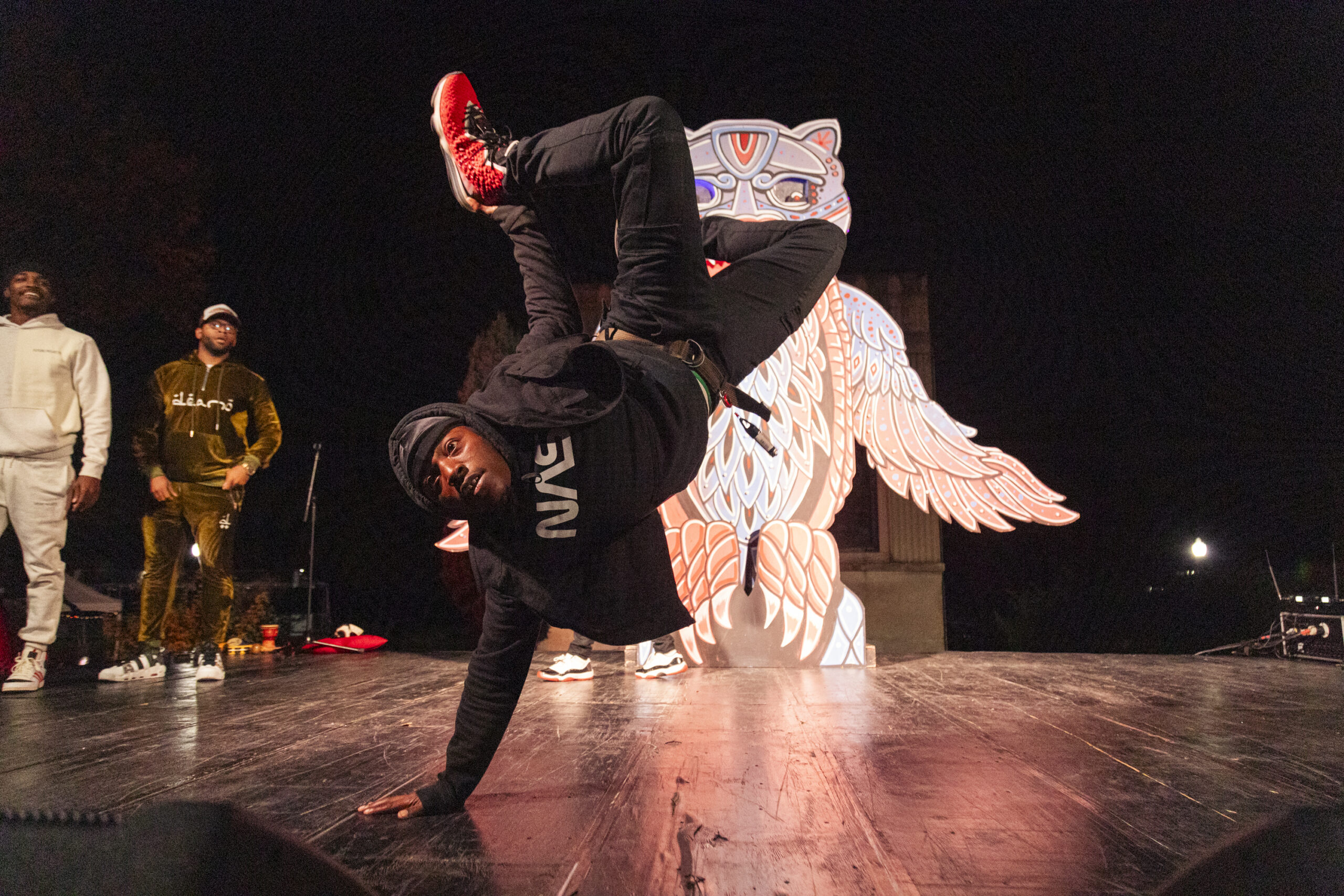
Last year’s “Night Creatures” parade featured works by local Asian American cultural groups, including an illuminated sculpture representing the Chinese Year of the Dragon, traditional Cambodian dancing, Indian and Bollywood dancing, and a Korean drumming group. This year will include the same lineup with one addition—lion dancers from the University of Maryland performing a traditional Chinese dance that mimics a lion’s movement.
Joanna Pecore, director of Towson University’s Asian American Arts and Culture Center, underscores the ripple effect that can come from incorporating such a wide array of diverse traditions.
“Understanding and enjoying those kinds of art forms is something that, unless you’re already connected to those communities, you might not have access to,” she says. “I’m hoping that attendees will be interested in finding the communities themselves and going to their cultural events to learn more.”
Celebrating 25 years
Organizers started planning this year’s special 25th anniversary parade the day after last year’s event, says Friends of Patterson Park program director Katie Long.
They invited schools and community groups to participate; organized who will walk in what order; and planned crafts, kids activities, and local food vendors for the daytime festival, which takes before the parade steps off at sundown. Leading up to the big day, parade director Rachel Rush estimates they’ll make about 1,500 community lanterns.
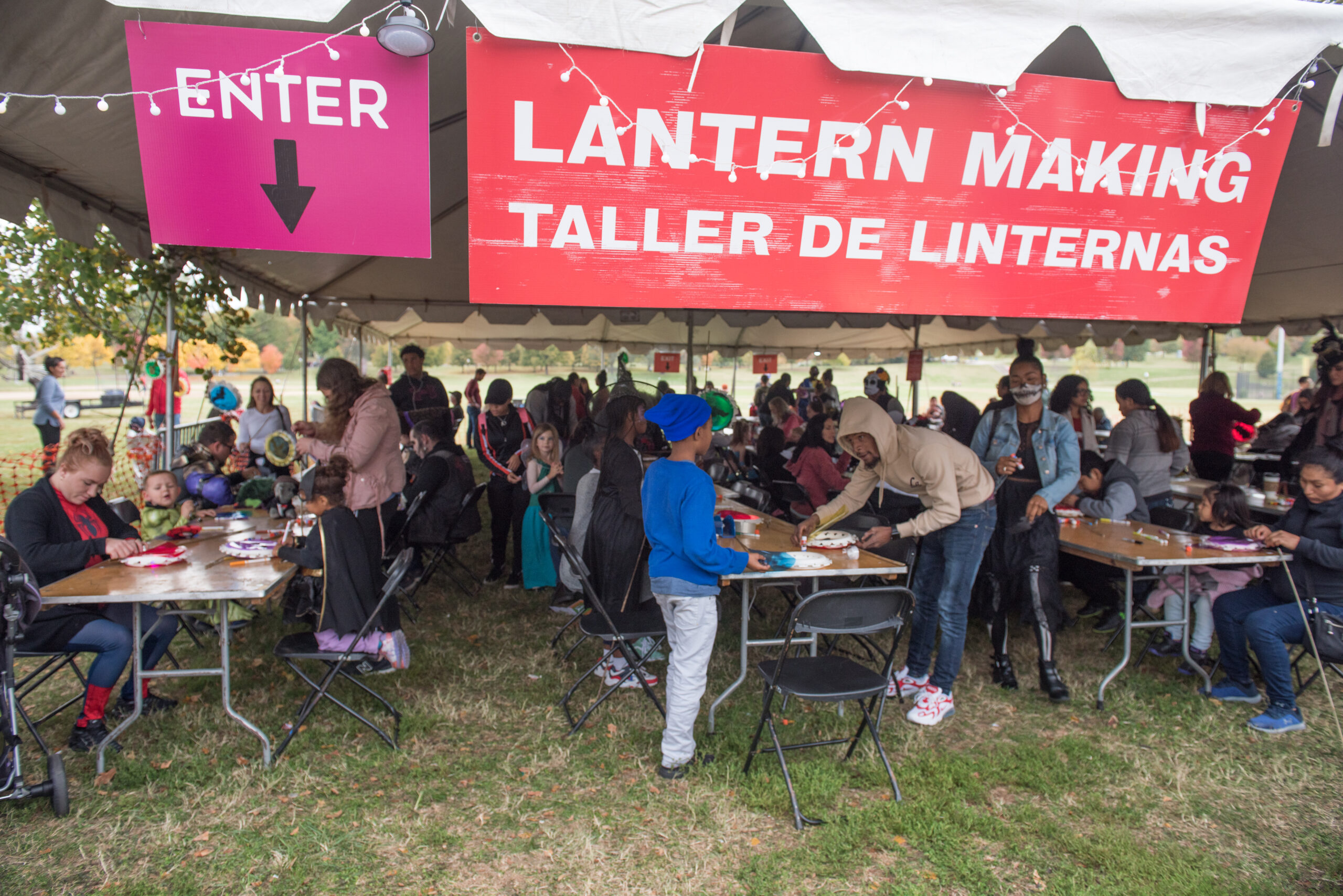
This year’s event doesn’t have a particular theme. Instead, it will amplify the event’s milestone anniversary. Fan-favorite parade highlights, including a snail, moth, and owl, will be featured this year as “geriatric lanterns” because of how long they’ve been in the parade. And a new lantern called “Maggie the Megasaurus” is being created in honor of Creative Alliance co-founder Margaret Footner.
“It’s definitely become a Baltimore holiday,” Rush says. “It’s really authentic to what our mission is, which is bringing people together to celebrate each other.”
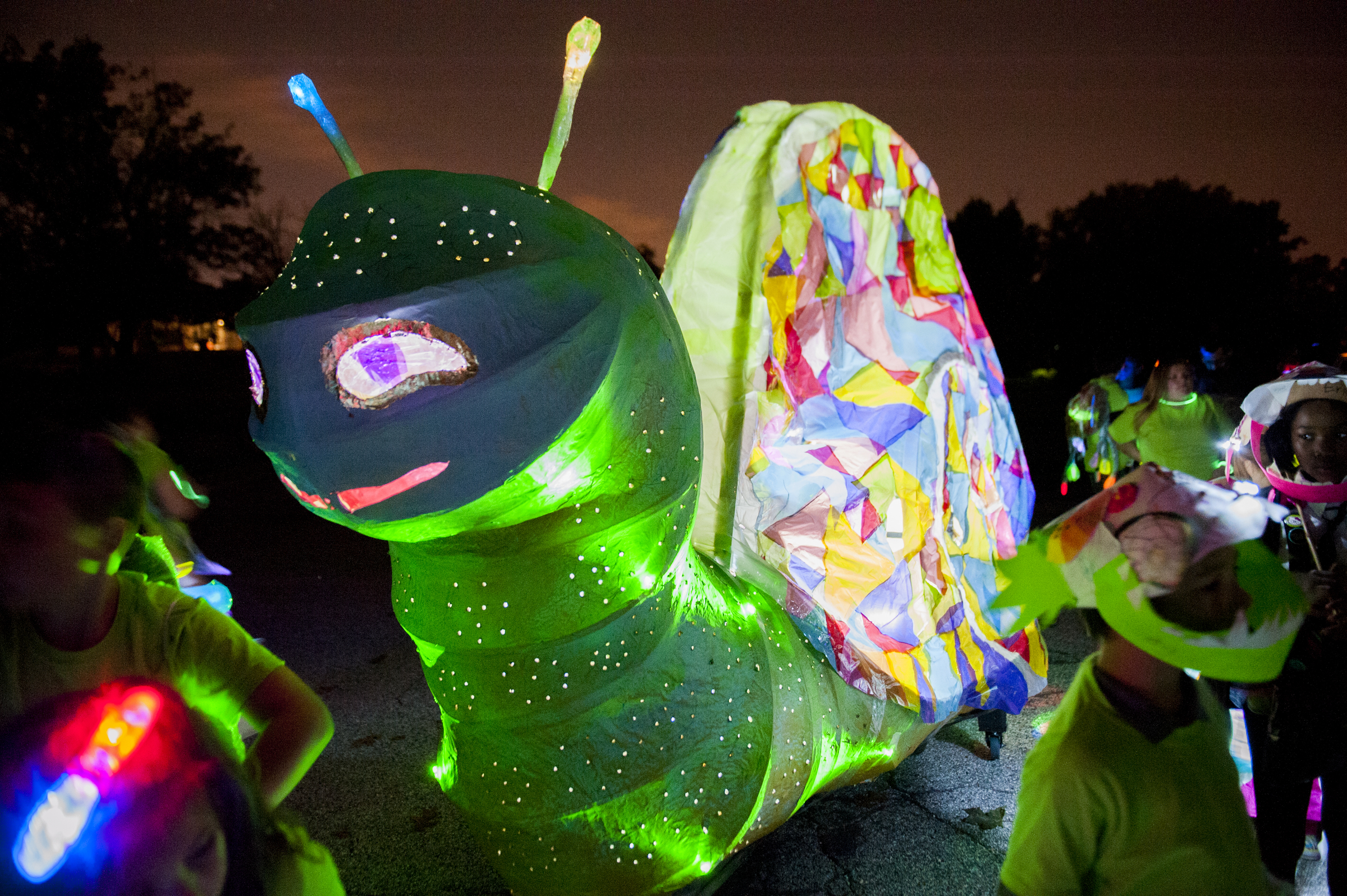
Robinson, who has also been a parade marshal and the costume contest’s emcee, says much of parade planning involves creating a story through different sections of floats and performers. It’s all about spacing out the groups, aligning with the year’s theme, and balancing the diverse aspects of the parade, she says.
“People come together for one night and create a different kind of community, a larger community that is really beautiful to see,” says Collins, one of the early organizers. “I just hope it goes for 25 more years.”
